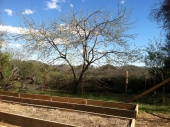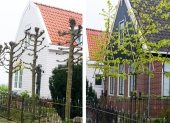John Saltveit wrote:Also , they can have a certain kind of fruit grafted onto them, but I forget which variety.
OMG, John, you have
NO idea how much excitement you caused here with that offhand remark. Osage orange trees are the dominant tree on the former-pasture areas of our land, and we consider them a trash tree for the most part, because they are such a pain and contribute so little (although we do have people who come to harvest bow wood). To be able to convert them into productive fruit trees via grafting? I never imagined!
So of course I hit the Google machine with great enthusiasm. The tree you remember is called the Che tree, and it sounds very promising. In order to not hijack this thread, I've
created a thread just for them to share what I discovered.
Thank you thank you thank you!








